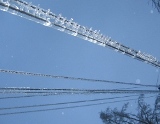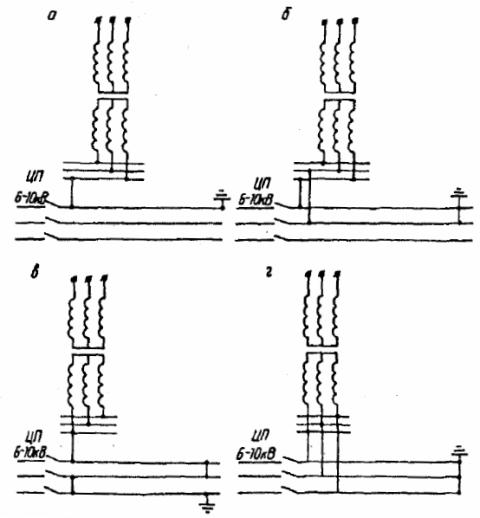Melting of ice on the conductors of power lines with a voltage of 6 — 10 kV
 As air moves over the surface of the earth, warm masses containing moisture in the form of water vapor come into contact with cold air. In the boundary layer of these two masses of fluff, conditions are created for the existence of supercooled water vapor, which, upon contact with parts of power lines at temperatures below zero, forms ice crystals on the structural elements of the lines.
As air moves over the surface of the earth, warm masses containing moisture in the form of water vapor come into contact with cold air. In the boundary layer of these two masses of fluff, conditions are created for the existence of supercooled water vapor, which, upon contact with parts of power lines at temperatures below zero, forms ice crystals on the structural elements of the lines.
Drops of fog, rain, and precipitation deposited on wires, cables, and support structures that have subzero temperatures also form ice or ice mass frozen around the wires. This phenomenon is called icing. Ice It is a continuous solid sediment in the form of transparent or frozen ice with an approximate density of 0.9 x 103 kg / cm3.
In case of significant ice deposits, interruptions of wires and breakage of parts of the supports or the supports themselves are possible, therefore measures should be taken to remove ice from the conductors of the line.
Single-phase, two-phase and three-phase short-circuit current ice melting methods are most widely used on disconnected lines with a voltage of 6-10 kV. At the same time, special transformers used only for melting ice and providing a melting current equal to the long-term permissible load current of the given line or exceeding the long-term permissible current by no more than 1.5 times must be installed in the TP.
The diagrams of ice melting by single-phase, two-phase and three-phase short-circuit currents on disconnected lines are shown in Fig. 1.
Here, at the other end of the line, one, two or three phases to ground are artificially arranged. The voltage must be such as to ensure the passage of a melting current equal to or exceeding the continuous allowable current of the line.

Rice. 1. Scheme of melting ice: a — with an alternate short circuit of one phase, b — with an alternate short circuit of two phases, c — with a series connection of two phases of the line (in a snake), d — with the installation of a three-phase short connection at the end of the line
Instead of a short-circuit device at the end of the line, the method of counter-switching (to different phases through the line conductor) of transformers installed at both ends of the line can be used. The resulting short-circuit current should ensure that the ice on the wires of the power line melts.
